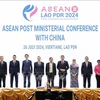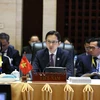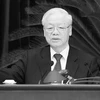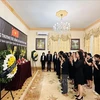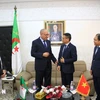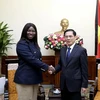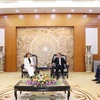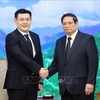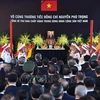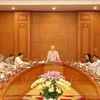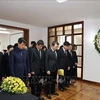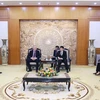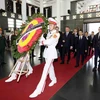The Asia-Pacific Economic Cooperation (APEC) Senior Officials’ Meeting and the 25th APEC Ministerial Meeting (AMM 25), which recently wrapped up in Bali, Indonesia, have affirmed APEC’s role as a driving force for global growth.
The main objective of APEC, as set in the Bogor Goals adopted at the APEC Summit in 1994, is to develop an Asia-Pacific region friendly to trade and investment by removing tariffs, facilitating flows of human resources, and improving the trade of goods and services.
This is an extremely big and difficult task for APEC as it comprises economies with different conditions and viewpoints.
Therefore, since it was established, APEC has not aimed to become a bloc like the EU, but considered it a process to support programmes and policies in the region through the backing of free trade agreements (FTAs), free trade areas, and regional trade agreements (RTAs) among member economies.
Wahid Supriya, a senior official from the Indonesian Government, quoted SOM APEC and AMM 25 organisers as saying that the EU’s success in promoting trade and investment through its members’ economic integration has inspired other regional structures in the world, including the Asia-Pacific region.
By the end of 2012, APEC had about 100 RTAs and FTAs between member economies, he added.
Realising the importance of these agreements, he said that APEC has set a long-term objective of building a Free Trade Area in Asia-Pacific (FTAAP).
Once established, the FTAAP will bring a lot of interest to APEC member economies, thus boosting world trade, as the region contributes nearly 60 percent of the global GDP and about half of all trade. It will also have positive impacts on regional peace and stability.
ASEAN, one of the regional structures, plans to start the FTAAP together with APEC.-VNA
The main objective of APEC, as set in the Bogor Goals adopted at the APEC Summit in 1994, is to develop an Asia-Pacific region friendly to trade and investment by removing tariffs, facilitating flows of human resources, and improving the trade of goods and services.
This is an extremely big and difficult task for APEC as it comprises economies with different conditions and viewpoints.
Therefore, since it was established, APEC has not aimed to become a bloc like the EU, but considered it a process to support programmes and policies in the region through the backing of free trade agreements (FTAs), free trade areas, and regional trade agreements (RTAs) among member economies.
Wahid Supriya, a senior official from the Indonesian Government, quoted SOM APEC and AMM 25 organisers as saying that the EU’s success in promoting trade and investment through its members’ economic integration has inspired other regional structures in the world, including the Asia-Pacific region.
By the end of 2012, APEC had about 100 RTAs and FTAs between member economies, he added.
Realising the importance of these agreements, he said that APEC has set a long-term objective of building a Free Trade Area in Asia-Pacific (FTAAP).
Once established, the FTAAP will bring a lot of interest to APEC member economies, thus boosting world trade, as the region contributes nearly 60 percent of the global GDP and about half of all trade. It will also have positive impacts on regional peace and stability.
ASEAN, one of the regional structures, plans to start the FTAAP together with APEC.-VNA
